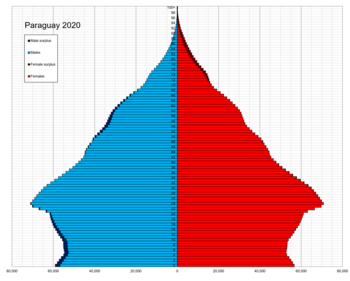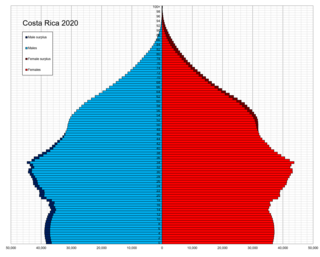
This is a demographic article about Costa Rica's population, including population density, ethnicity, education level, health of the populace, economic status, religious affiliations, and other aspects of the population.

This is a demography of the population of the Dominican Republic including population density, ethnicity, education level, health of the populace, economic status, religious affiliations and other aspects of the population.

This is a demography of the population of Guatemala including population density, ethnicity, education level, health of the populace, economic status, religious affiliations and other aspects of the population.

This article is about the ethnic groups and population of Honduras.
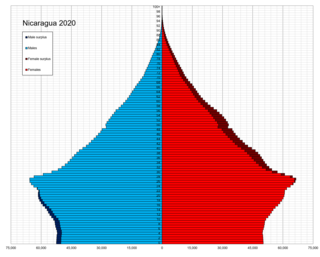
According to the 2022 revision of the World Population Prospects, Nicaragua has a population of 6,850,540..According to a 2014 research published in the journal Genetics and Molecular Biology, European ancestry predominates in 69% of Nicaraguans, followed by African ancestry in 20%, and lastly indigenous ancestry in 11%. A Japanese research of "Genomic Components in America's demography" demonstrated that, on average, the ancestry of Nicaraguans is 58–62% European, 28% Native American, and 14% African, with a very small Near Eastern contribution. Non-genetic data from the CIA World Factbook establish that from Nicaragua's 2016 population of 5,966,798, around 69% are mestizo, 17% white, 5% Native American, and 9% black and other races. This fluctuates with changes in migration patterns. The population is 58% urban as of 2013.

Paraguay, officially the Republic of Paraguay, is a landlocked country in South America. It is bordered by Argentina to the south and southwest, Brazil to the east and northeast, and Bolivia to the northwest. It has a population of around 6.1 million, nearly 2.3 million of whom live in the capital and largest city of Asunción, and its surrounding metro area.
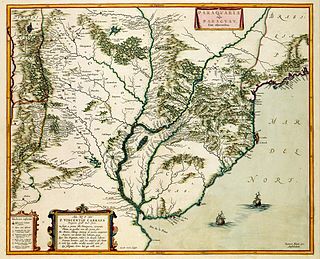
The history of Paraguay encompasses thousands of years of human habitation. Both agricultural and nomadic Guaycuruan lived in the region at the time of the Spanish Conquest. It became a relatively neglected part of the Spanish Empire due to its isolation and lack of mineral wealth, nonetheless a small group of Spanish settlers came to reside in the area, increasingly intermarrying with native women to produce a mestizo population. In the 17th and 18th centuries, Jesuit missionaries organized the natives into planned communities known as reducciones, and the experiment gained notable attention in Enlightenment Era Europe.

As of 1 July 2024, Spain had a total population of 48,797,875 The modern Kingdom of Spain arose from the accretion of several independent Iberian realms, including the Kingdoms of León, Castile, Navarre, the Crown of Aragon and Granada, all of which, together with the modern state of Portugal, were successor states to the late antique Christian Visigothic Kingdom after the Reconquista.

This is a demography of the population of Uruguay including population density, ethnicity, education level, health of the populace, economic status, religious affiliations and other aspects of the population.

Asunción is the capital and the largest city of Paraguay. The city stands on the eastern bank of the Paraguay River, almost at the confluence of this river with the Pilcomayo River. The Paraguay River and the Bay of Asunción in the northwest separate the city from the Occidental Region of Paraguay and from Argentina in the south part of the city. The rest of the city is surrounded by the Central Department.

This is a demography of Argentina including population density, ethnicity, economic status and other aspects of the population.

Demographics of the population of Belize include population density, ethnicity, education level, health of the populace, economic status, religious affiliations and other aspects.

The demographic characteristics of the population of Bolivia are known from censuses, with the first census undertaken in 1826 and the most recent in 2012. The National Institute of Statistics of Bolivia (INE) has performed this task since 1950. The population of Bolivia in 2012 reached 10 million for the first time in history. The population density is 9.13 inhabitants per square kilometer, and the overall life expectancy in Bolivia at birth is 68.2 years. The population has steadily risen from the late 1800s to the present time. The natural growth rate of the population is positive, which has been a continuing trend since the 1950s; in 2012, Bolivia's birth rate continued to be higher than the death rate. Bolivia is in the third stage of demographic transition. In terms of age structure, the population is dominated by the 15–64 segment. The median age of the population is 23.1, and the gender ratio of the total population is 0.99 males per female.

The demographic characteristics of Cuba are known through census which have been conducted and analyzed by different bureaus since 1774. The National Office of Statistics of and Information of Cuba (ONEI) since 1953. The most recent census was conducted in September 2012. The population of Cuba at the 2012 census was nearly 11.2 million. The population density is 101 inhabitants per square kilometer, and the overall life expectancy in Cuba is 78.0 years. The population has always increased from one census to the next in the 20th century, with the exception of the 2012 census, when the count decreased by 10,000. Since 1740, Cuba's birth rate has surpassed its death rate; the natural growth rate of the country is positive. Cuba is in the fourth stage of demographic transition. In terms of age structure, the population is dominated (71.1%) by the 15- to 64-year-old segment. The median age of the population is 39.5, making it the oldest in the Americas, and the gender ratio of the total population is 0.99 males per female.

Corrientes is the capital city of the province of Corrientes, Argentina, located on the eastern shore of the Paraná River, about 1,000 km (621 mi) from Buenos Aires and 300 km (186 mi) from Posadas, on National Route 12. It has a population of 346,334 according to the 2010 Census. It lies opposite its twin city, Resistencia, Chaco.

Paraguayans are the citizens of Paraguay.

Christianity is the predominant religion in Paraguay, with Catholicism being its largest denomination. Before the arrival of Spanish missionaries, the people residing in the territory of modern day Paraguay practiced a variety of religions.

The demographics of Colombia consist of statistics regarding Colombians' health, economic status, religious affiliations, ethnicity, population density, and other aspects of the population. Colombia is the second-most populous country in South America after Brazil, and the third-most populous in Latin America, after Brazil and Mexico.
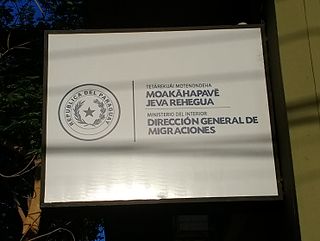
The Republic of Paraguay is a mostly bilingual country, as the majority of the population uses Spanish and Guaraní. The Constitution of Paraguay of 1992 declares it as a multicultural and bilingual country, establishing Spanish and Guaraní as official languages. Spanish, an Indo-European language of the Romance branch, is understood by about 90% of the population as a first or second language. Guaraní, an indigenous language of the Tupian family, is understood by 77%, and its use is regulated by the Academy of the Guaraní Language.

Historically, the migratory history of Paraguay has been ambiguous, since it has had periods of large scale emigration as well as large waves of immigrants, primarily from Europe.
